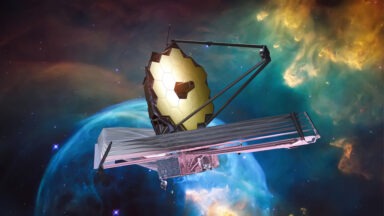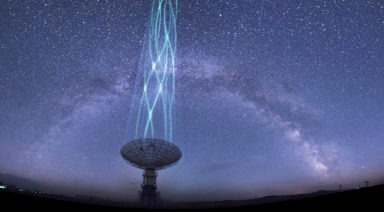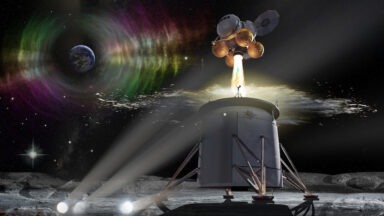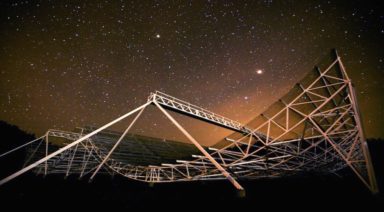Professor Says He Found Equation That Makes Time Travel Possible

In 1895, author H.G. Wells captured the imagination of his readers by having his protagonist, a Victorian English scientist, bravely climb into a time machine and set off into uncharted territory. Wells is credited with coining the phrase “time travel,” although the idea of exiting one timeframe and entering into another has intrigued humankind far into the misty past.
To this day, many still feel that it's entirely possible to traverse time if we could only discover how. But now, the time may have finally come: A prominent astrophysicist recently claimed that he now has the mathematics to make time travel a reality.
Here we are, a hundred years since the introduction of Einstein’s Theory of General Relativity, and science is closing in on time travel. Astrophysicist Ron Mallett, professor emeritus of physics, has been studying time travel long before embarking on his professional career.
Now in his 70s, he has at long last — at least theoretically — discovered a way to travel into the past. Putting his mathematical equation to work, he has come up with a prototype device with functionality that seems plausible, although he has yet to wow his contemporaries who are standing in the wings to see what comes next.
Ingenuity Sparked by Tragedy
Although Mallett’s work is tantalizing from a scientific perspective, his yearning to rekindle the past has been driven by a strong desire to reunite with his father who died from a heart attack when Mallett was only 10 years old. Regarding his father’s passing, Mallett said, “For me, the sun rose and set on him, he was just the center of things…Even today, after all of these years, there’s still an unreality about it for me.” This tragic event changed the course of his life, and maybe even the lives of humankind, especially if his invention bears fruit.
Shortly after his father’s death, the young Mallett came across a copy of H.G. Well’s novel The Time Machine, and after he read the book he was imbued with hope and a desire to conquer time through science.
Twisting Natural Forces of Light and Space
In 2015, Dr. Mallett said that “time travel could, in fact, become a reality, though perhaps on a very limited scale…My breakthrough was to realize that if gravity can alter time, and light can create gravity, then light can alter time. This leads to the possibility of a time machine based on laser light.”
Mallett’s prototype is based on his research of a circulating laser light device that’s capable of twisting space and time, enabling travel into the past or future. His success hinges on Einstein’s theory of relativity, as well as Einstein’s general theory of relativity. Einstein showed that time can be altered by speed. An example of this would be realized when traveling through space in a rocket that’s almost as fast as the speed of light. Time would considerably slow down in space, though while on Earth, many more years would have passed. Therefore, the faster you travel, the more time changes. This has much to do with gravity, as well, because time slows down when gravity becomes stronger.
The force of gravity, according to Einstein’s general theory of relativity is the bending of space by a massive object. “If you can bend space, there’s a possibility of you twisting space,” said Mallett. In the simplest terms, whatever affects space also affects time. The professor’s theory proposes that by twisting time into a loop it should be possible to travel from the future into the past, and then back to the future.
Mallett Sees the Light
We can add yet another factor into Mallett’s theory that time travel is possible: Light can also affect time by using a ring laser. In a CNN interview, he said that a certain type of gravitational field produced by a ring laser could possibly comprise a time machine based on a circulating beam of light. “Eventually a circulating beam of laser lights could act as a sort of a time machine and cause a twisting of time that would allow you to go back into the past,” he says.
While Ron Mallett has come up with the mathematics to back up his theory of time travel, he does admit to one huge problem. While it may be possible to send information back in time, (as of this writing) it’s only theoretically possible to send it back to the point at which the time machine is turned on.
Doubtlessly, a great deal of science fiction eventually manifests into reality — including travel through space, walking on the moon and landing on Mars, laser beams that cut through metal like a knife through butter, and so much more. Perhaps Ron Mallett — an astrophysicist with a lifelong dream of traveling through time — has come up with an equation that is sure to stand the test of time.
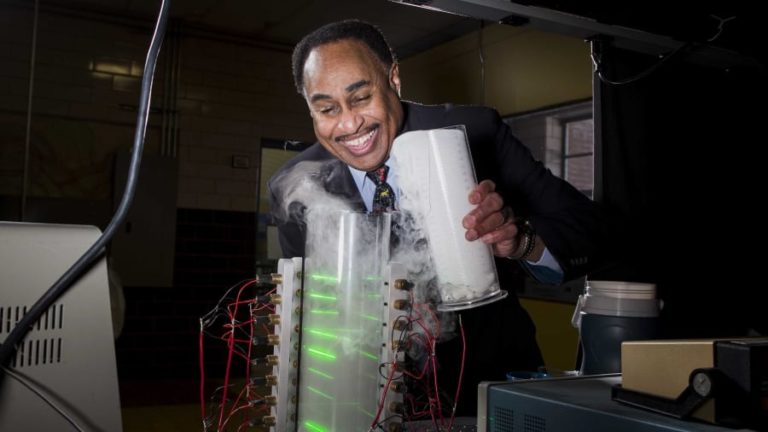
Mallett experimenting in his lab
Why the Question of Who Created Calculus is a Touchy Subject

In calculus, there are theorems and conjectures, generally born from thinkers who love to discuss ideas and rules related to the nature of the universe. Conjectures are guesses. Theorems are proven conjectures. In political theory, it’s akin to when a bill becomes a law. Both theorems and conjectures tend to have long histories of documented improvements and analyses. The equations, proofs and rules that arise along the way are often described as simple or neat. While calculus might be founded in intellectual elegance, the history of calculus is messy and contested. This begs the questions: “who created calculus?,” and “when?”
“If a ‘religion’ is defined to be a system of ideas that contains unprovable statements, then Gödel taught us that mathematics is not only a religion, it is the only religion that can prove itself to be one.”
— John Barrow






